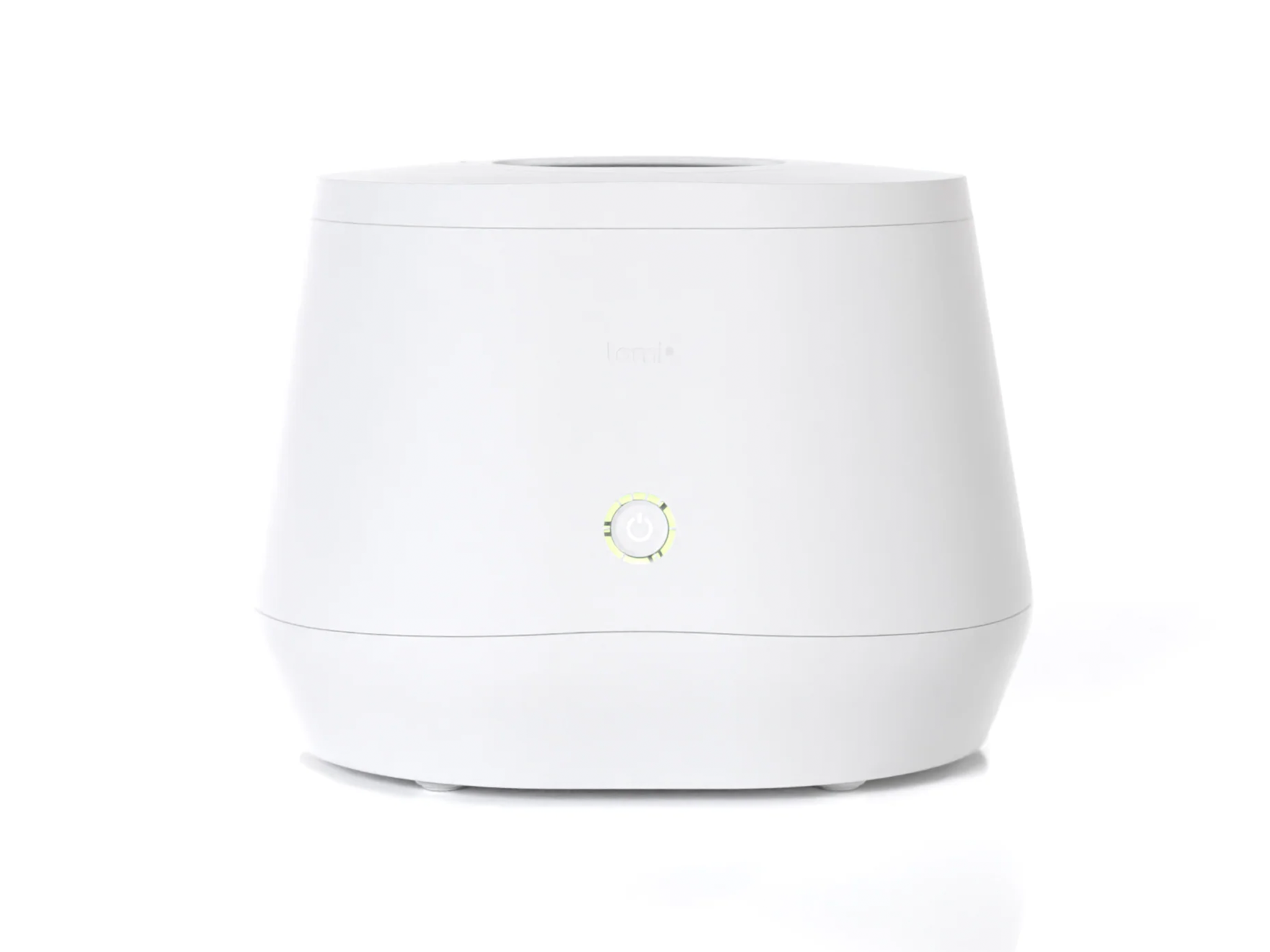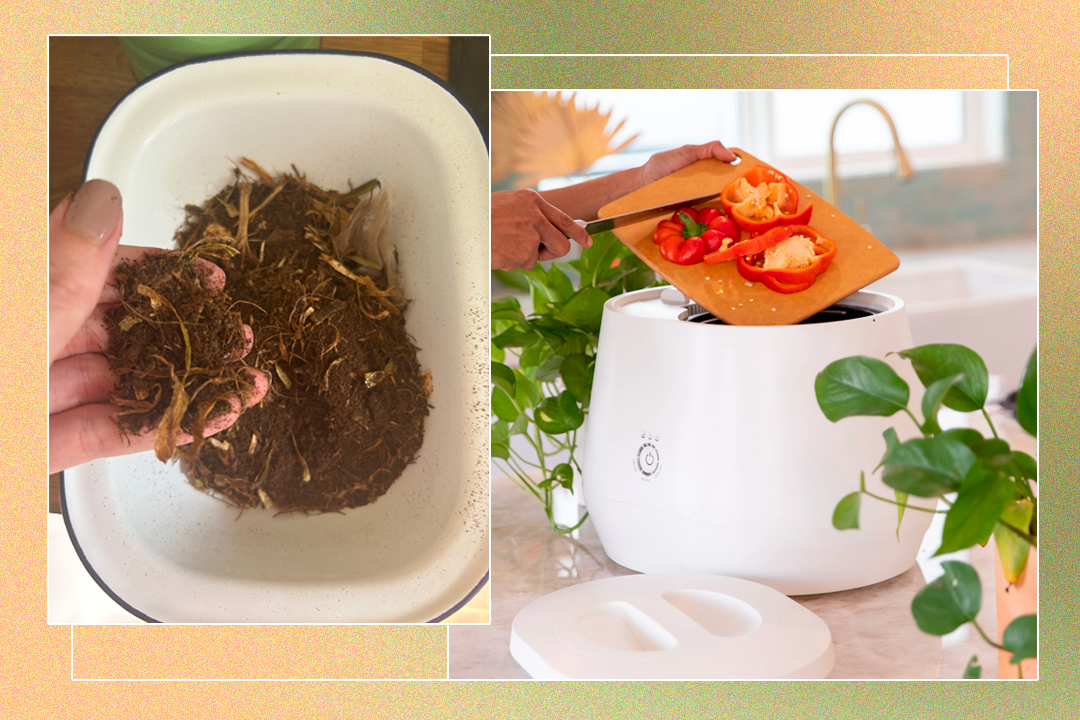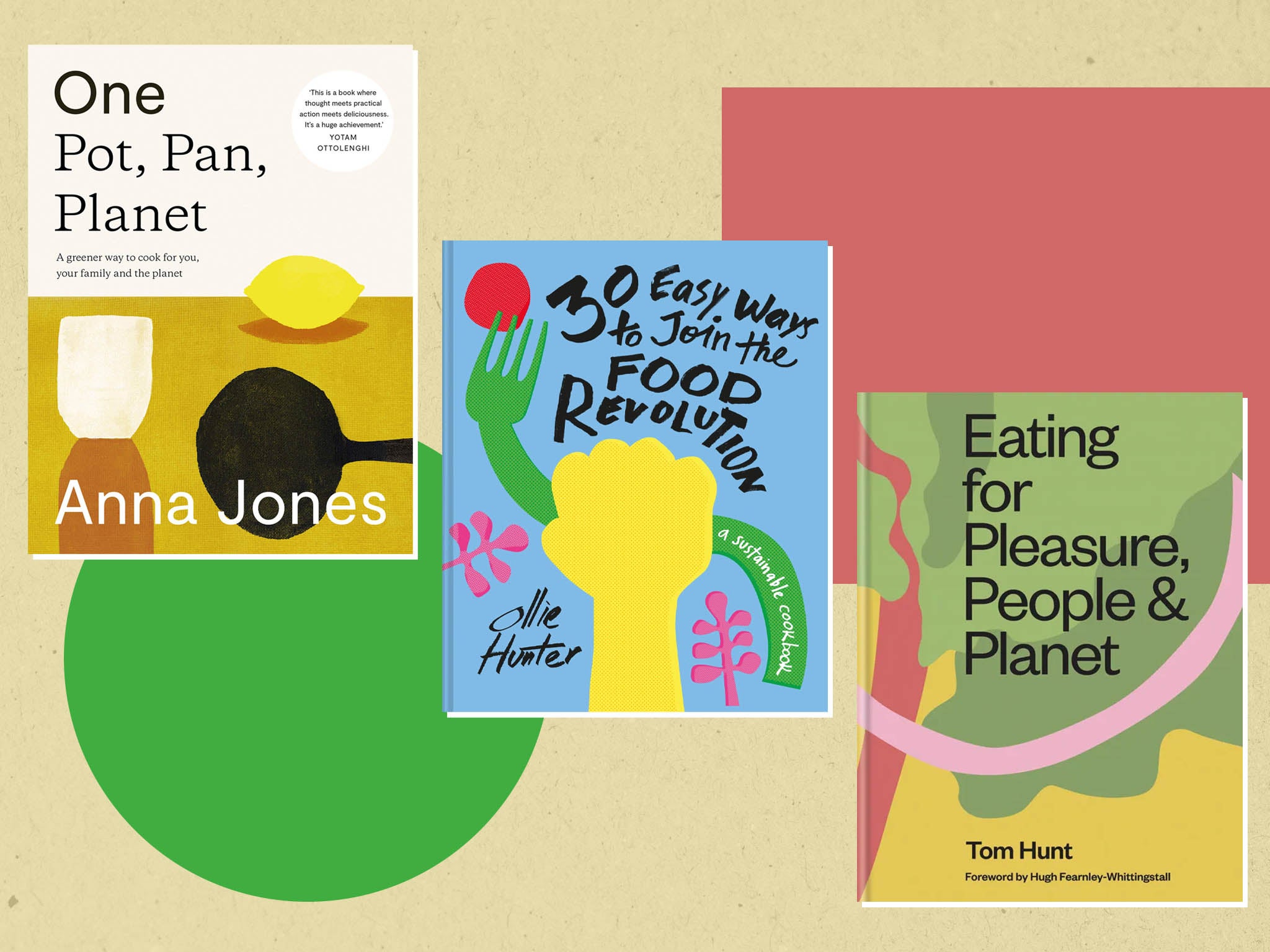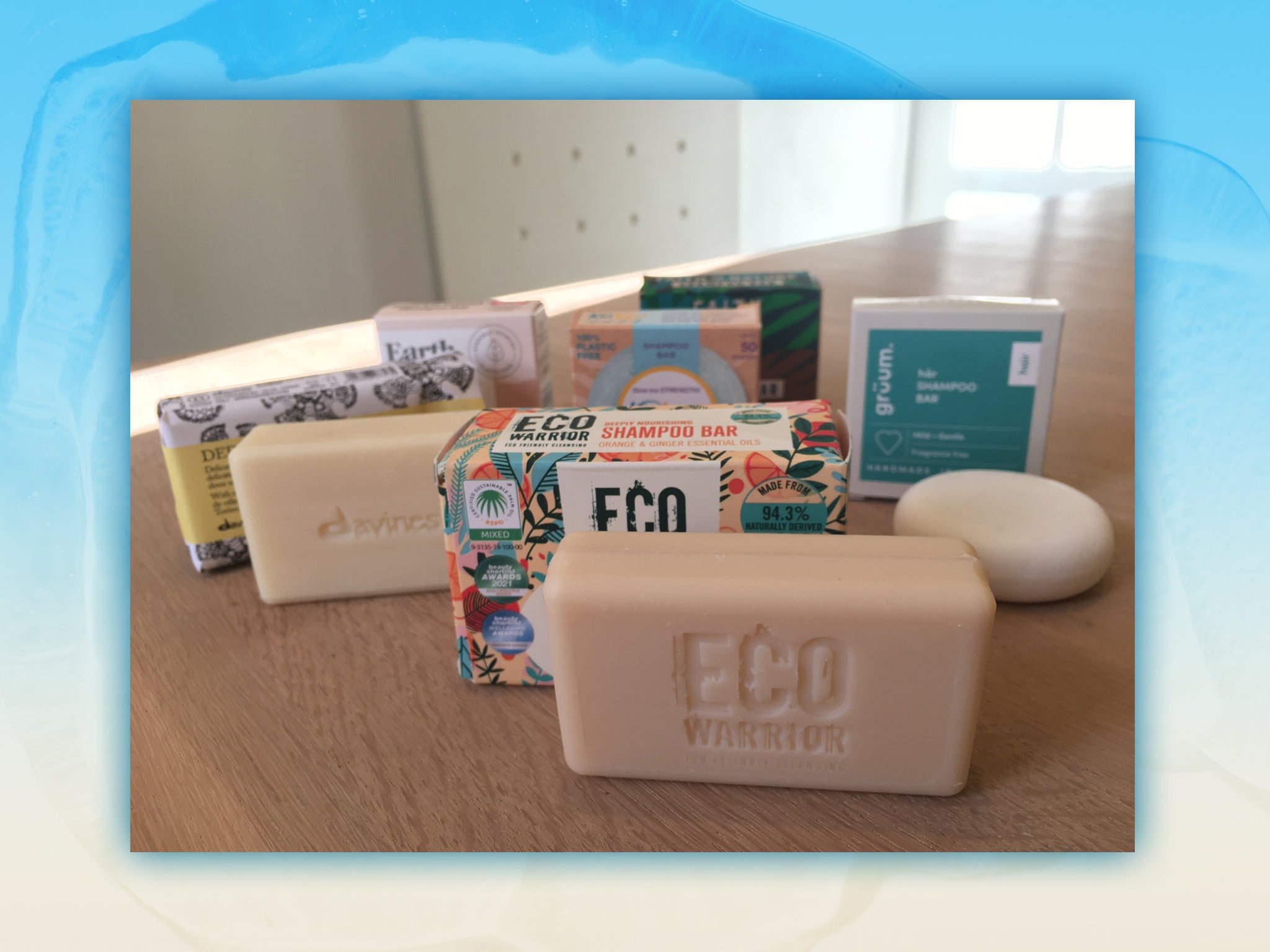Lomi classic composter

- Size: W22.8cm x D38.8cm x H31.4cm
- Weight : 9kgs
- Capacity : 2.5l
- Wattage : 500W
- Energy consumption : Less than 1kWh on any cycle
- Noise level : < 60DB
- Why we love it
- Clear, simple instructions
- Composts cooked food
- Low energy consumption
- Take note
- Not great with bio-plastics
- Plastic-free teabags don’t fully decompose
- Refills tha trap odour are expensive
- Not silent
Design
Devised by Canadian, Jeremy Lang, who is also the founder of Pela – the world’s first compostable phone cases – the machine’s launch neatly tied in with Earth Day 2021. Since then the brand says it has stopped 17 million pounds of food waste (7 million kgs) from entering landfill.
The idea is that food scraps and waste put into the machine is turned into a natural fertiliser, or soil, which the company is very keen not to call compost. The set up is easy – all you need to do is put the small charcoal pellets into two places – one is a column inside the machine, and another is a small box at the back. The instructions are simple and clear, and once that’s done, it’s ready to roll.
Read more: 17 best air fryers, reviewed
One of the brand’s key points is that it’s "small enough to put away, so beautiful you won’t want to". Its simple design (without lots of buttons, lights and screens) and shape does make it very inoffensive, especially compared to some other worktop gadgets (air fryers, I’m looking at you).
It looks pretty similar to a bread maker, the Lomi machine is quite cumbersome, even more so factoring in that it can’t be pushed up against a wall, as it needs plenty of space at the back to suck in air.
Though, in reality, unless you have a really tiny kitchen (like me), most kitchens can fit it in. Most people find space for a microwave, or an airfryer, along with a kettle and toaster. For me, this goes away in a cupboard when it’s not in use, which can feel like an extra chore having to lug it out each time.
Performance
Using a combination of intense heat and an internal blade, the Lomi dries out the food and chops it up into little pieces, reducing the 2.5l capacity of food waste down by 80 per cent into an average bowl full of ‘fertiliser’, which usually looks similar to traditional compost and is rich in the nutrients. There are three modes:
- Eco express (Less than 0.60kWh - around 3 - 5 hours). This is the most versatile cycle, and can be used for practically anything bar bio-plastics.
- Lomi approved (Less than 0.75 kW - around 5 - 8 hours). Choose this mode if you want to mix in bioplastics with other food waste
- Grow mode (Uses around 1 kWh - around 16 - 20 hours). If you’re after the best fertiliser possible, this is the best option as its lower heat preserves more microorganisms, but it also can’t be used for bioplastics.
I usually only use the eco express mode, simply as it’s the quickest, which has consistently worked for me.
Though it might seem at odds to use electricity to compost, the brand has plenty of stats to attest to its low consumption and reduced carbon footprint benefits. It claims that each Lomi cycle uses around the same amount of power to run an oven for 15 minutes, or the same energy an average dishwasher uses during one cycle.
Some things work better than others, and it’s best to keep it varied so it’s not too wet, and big chunky vegetables or mouldy bread needs to be cut up. In my experience, bio plastics (these must be Lomi-approved materials, so check Lomi’s website first) don’t seem to work too well and you’ll be left with noticeably large pieces of plastic still, which I’ve put through the machine again. Shredded paper works really well here, as even though paper can be recycled, small shredded bits often fly away on conveyor belts in recycling centres as they’re so light.
Read more: Best reusable coffee cups
One of the biggest positives is the ability to compost cooked food, as it can’t go into traditional compost bins for fear of attracting unwanted pests. The only thing that can’t go in there is liquids, including oils.
There are, though, a few downsides to this machine. I’ve had it for about five months and use it a few times a week. One is that plastic-free tea bags, which are made from cornstarch, don’t fully decompose – though they don’t compost very well in my own compost bin, despite being designed to do so.
It’s also started to omit a rather sickly sweet smell while in use. It uses charcoal pellets to trap moisture and smells, which I’ve changed once, but at £54.95 for two packs, it’s an expensive refill that really adds to the overall cost of running the machine. Like most large gadgets, it’s not silent, and sometimes can be a bit noisy at its peak. If you’re working from home, pop it in another room and it’s not noticeable.
One of my biggest issues with it, though, is that if you pop the ‘soil’ into a plant pot, it only seems to clump together and form a seal that often goes mouldy. For the best results, I’ve found it needs to be forked into the soil. But for this, you’d need an empty bed at best to be able to do it, or lots of large plant pots.
Read more: 9 best bamboo bed sheets
Lomi is a startup business and is clearly learning as it goes. Now, it suggests mixing the Lomi soil with actual soil at a ratio of 1:10, which wasn’t the guidance when I first started testing. It also suggests, if you don’t have a garden, adding this to your brown bin for garden waste if you have one.












